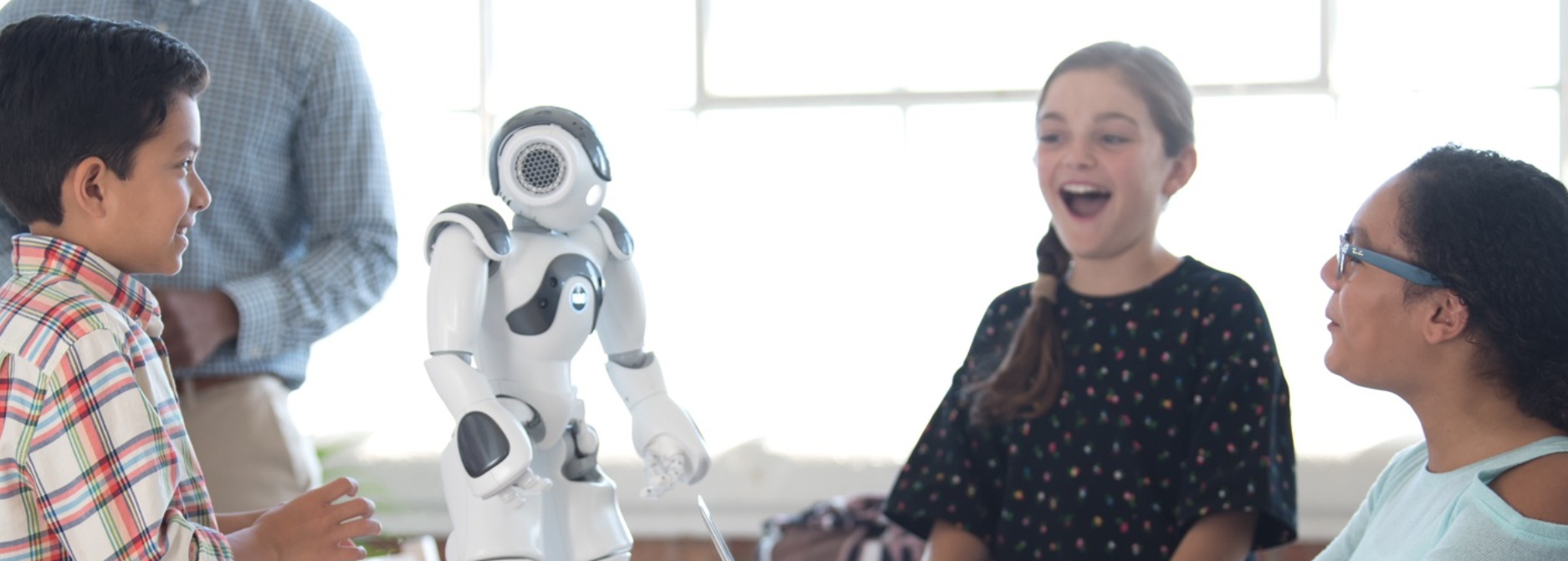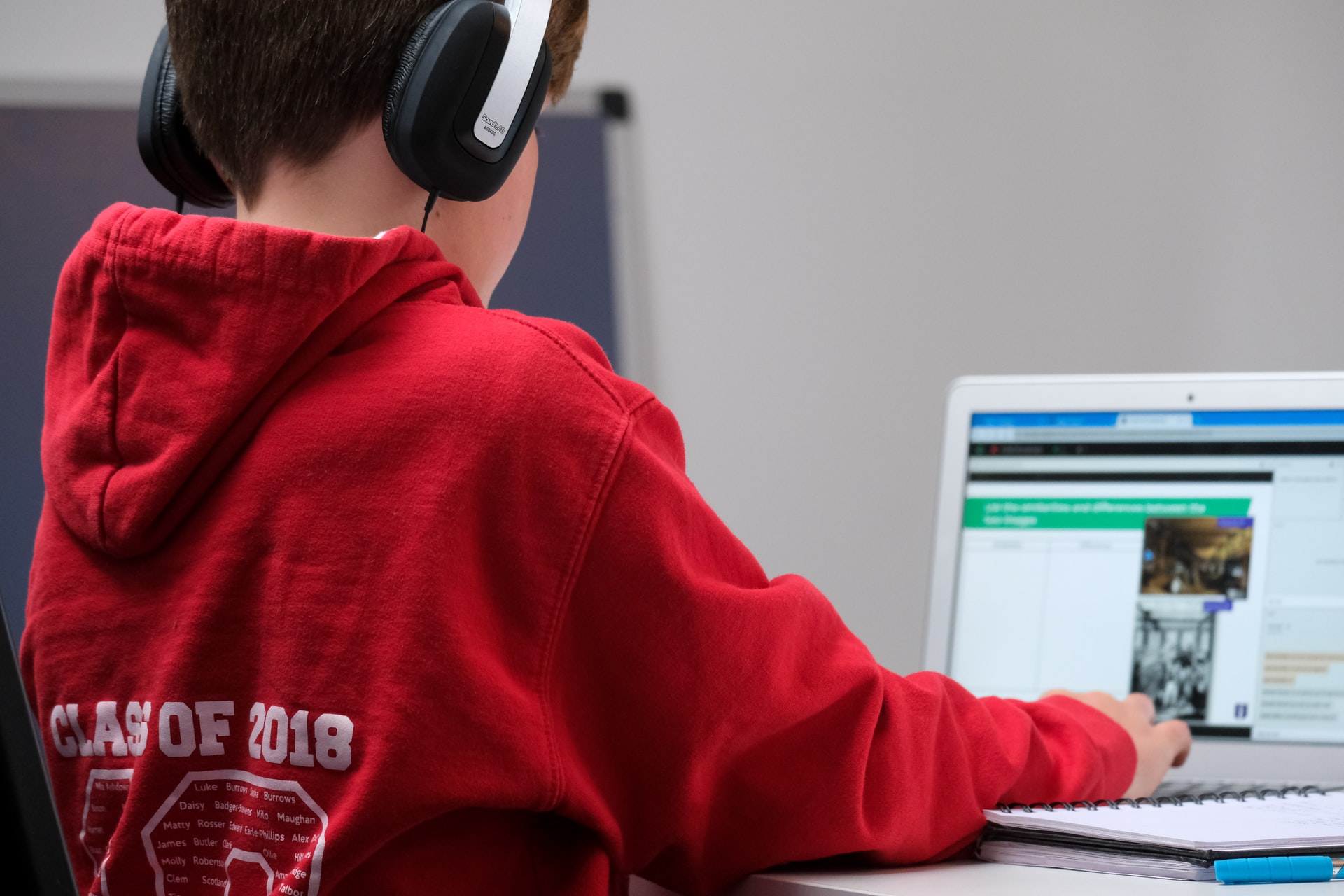7 Ways That Artificial Intelligence Helps Students Learn

The role of artificial intelligence in education is always a hot topic. While some fear that artificial intelligence will take over education to the detriment of students and teachers, others claim that artificial intelligence will revolutionize and improve education.
While we’re far from seeing robots in the classroom, artificial intelligence is making its way into education. Certain tasks can be made easier through the use of artificial intelligence. Grading, for example, can be done quickly and easily using artificial intelligence. The most important way that education will transform education is by simply helping students to learn. In this piece, I will discuss 7 ways that artificial intelligence helps students learn.
- 0 Comments
- Nov 12, 2021 10:00:00 AM
- Posted by Maria Alejandra Calcetero
- Topics: Robotics, EdTech, STEM, Education, code, 21st Century Classroom, Special Education, Artificial Intelligence, data literacy, Coding, Robots,, students, programming, Technology, VR, Realidad Virtual, STEMchat, Edchat, AI, k12, Virtual Reality, virtual learning, classroom, Inteligencia Artificial, Literacy, STEM literacy
RobotLAB, America's Exclusive SoftBank Robotics Distributor, to Cover Middle East, Asia, and the Pacific

RobotLAB Inc. the world's leading educational and business robotics integrator has entered an agreement with SoftBank Robotics to expand the distribution territory from the Americas to Asia, the Middle East, and the Pacific.
- 0 Comments
- Nov 10, 2021 2:30:00 PM
- Posted by Maria Alejandra Calcetero
- Topics: Robotics, EdTech, STEM, Education, code, 21st Century Classroom, Special Education, Artificial Intelligence, data literacy, Coding, Robots,, students, programming, Technology, VR, Realidad Virtual, STEMchat, Edchat, AI, k12, Virtual Reality, virtual learning, classroom, Inteligencia Artificial, Literacy, STEM literacy
What Educators Should Know About Too-Good-To-Be-True Software Prices?
By Devin Partida

Photo by Mimi Thian on Unsplash
If you're a K-12 educator, you know how crucial it is to budget appropriately for spending on class supplies, software, and instructional materials.
You likely need to spend money out of your pocket to account for classroom decor, office supplies like pens and pencils, and other things. Those transactions can add up, leaving you feeling overwhelmed when all you're trying to do is create a welcoming learning environment for your students.
While some schools offer some supplies to their teachers or have the funds to issue reimbursements, not every teacher is lucky enough to reap that benefit. It's only natural for you to try and find workarounds, such as downloading useful learning materials from the internet at a low cost. There are some technologies changing education that you simply cannot do without, and educational software is no exception.
You may want to take advantage of these cheap deals, but have you ever thought about the possible consequences of downloading software from an unknown source?
Let's explore what pirated software is, the consequences of downloading it, and how you can identify some of the warning signs to look out for when using cheap software.
- 0 Comments
- Nov 10, 2021 10:00:00 AM
- Posted by Maria Alejandra Calcetero
- Topics: Robotics, EdTech, STEM, Education, code, 21st Century Classroom, Special Education, Artificial Intelligence, data literacy, Coding, Robots,, students, programming, Technology, VR, Realidad Virtual, STEMchat, Edchat, AI, k12, Virtual Reality, virtual learning, classroom, Inteligencia Artificial, Literacy, STEM literacy
Create a Culture of Learning in Your Classroom
 Photo by Kuanish Reymbaev on Unsplash
Photo by Kuanish Reymbaev on Unsplash
Maybe you’ve witnessed a classroom where the focus on learning is intense.
A hum of excitement resonates in the air, and everyone, the teacher and students alike, goes about their work with a focused purpose. Everyone is engaged. The workflow is fluid. Routines are seamless. The students help each other succeed.
Maybe that classroom is yours.
If it’s not, it can be.
- 0 Comments
- Nov 9, 2021 10:00:00 AM
- Posted by Maria Alejandra Calcetero
- Topics: Robotics, EdTech, STEM, Education, code, 21st Century Classroom, Special Education, Artificial Intelligence, data literacy, Coding, Robots,, students, programming, Technology, VR, Realidad Virtual, STEMchat, Edchat, AI, k12, Virtual Reality, virtual learning, classroom, Inteligencia Artificial, Literacy, STEM literacy
Using Artificial Intelligence To Help Students With Learning Disabilities Learn

Educators can have a challenging time adapting their teaching style to match every student, especially when there are students with learning disabilities in their classroom. A learning disability presents a unique obstacle to traditional teaching methods. It can be difficult in a contemporary classroom for teachers to give students the attention and instruction they really need. Now, they might be able to receive that instruction through the use of artificial intelligence.
Artificial intelligence is rapidly growing more useful by the day. Researchers are developing cognitive systems that can help to support those with disabilities in the unique ways that suit them. These AI programs may be able to present material in a fresh way that can help students to better understand independent of teacher instruction.
- 0 Comments
- Nov 8, 2021 10:00:00 AM
- Posted by Maria Alejandra Calcetero
- Topics: Robotics, EdTech, STEM, Education, code, 21st Century Classroom, Special Education, Artificial Intelligence, data literacy, Coding, Robots,, students, programming, Technology, VR, Realidad Virtual, STEMchat, Edchat, AI, k12, Virtual Reality, virtual learning, classroom, Inteligencia Artificial, Literacy, STEM literacy
6 Ways Edtech Tools Help Teachers Save Time
By Josiah Torvik, Teacher, St. Cloud Area MN School District 742
Edtech tools can prove invaluable to teachers who have limited time to juggle planning, teaching, and grading.
 Photo by Compare Fibre on Unsplash
Photo by Compare Fibre on Unsplash
- 0 Comments
- Aug 5, 2021 10:00:00 AM
- Posted by Natalia Galvis
- Topics: EdTech, STEM, Curriculum, Problem Based Learning (PBL), Artificial Intelligence, teachers, Coding, students, Codificación, Edchat, AI, Digital Technology, teaching, online, Inteligencia Artificial
How AI Technologies Support School Safety

Technology has advanced to the point where many tools, including AI technologies, can alert educators of danger before a disaster occurs.
- 0 Comments
- Aug 2, 2021 10:00:00 AM
- Posted by Natalia Galvis
- Topics: EdTech, STEM, Curriculum, Problem Based Learning (PBL), Artificial Intelligence, teachers, Coding, students, Codificación, Edchat, AI, Digital Technology, teaching, online, Inteligencia Artificial
AI is only Part of the Future
 Photo by Markus Spiske from Pexels
Photo by Markus Spiske from Pexels
Artificial intelligence is already a part of schools everywhere. You find it in customized lessons taught via computer, data-management software, predictive and prompted emails, and adjustments in climate-controlled buildings.
AI also has begun to permeate instruction, with interactive robots and curriculum built around STEM fields. In short, AI is changing the face of education.
- 0 Comments
- Dec 10, 2020 10:00:00 AM
- Posted by Natalia Galvis
- Topics: EdTech, STEM, Curriculum, Artificial Intelligence, teachers, students, Technology, Edchat, AI, Digital Technology, teaching, online, lessons, eLearning
How Artificial Intelligence is Empowering The Education Sector
 Image by vectorjuice - www.freepik.com
Image by vectorjuice - www.freepik.com
Artificial Intelligence is Improving Education Sector like never before!
We’re in 2020 and long past the days back when we used to stand outside the school library to get the opportunity to copy two or three Encyclopedia pages, to use as a kind of reference for our school projects.
With this age having grown up with the benefit of access to technology at their fingertips, the field of education has hugely changed and overturned in this digitally driven world. Artificial Intelligence in the education market was worth US$2.022 billion for the year 2019.
- 0 Comments
- Nov 2, 2020 10:00:00 AM
- Posted by Natalia Galvis
- Topics: STEM, Artificial Intelligence, teachers, students, Technology, STEMchat, Edchat, AI, teaching, online, lessons
6 Questions to Improve Your Virtual Classroom
It can be difficult to gauge how effective your online instruction is—using surveys to gather regular student feedback can help.
 Photo by August de Richelieu from Pexels
Photo by August de Richelieu from Pexels
- 0 Comments
- Sep 24, 2020 10:00:00 AM
- Posted by Natalia Galvis
- Topics: Math, EdTech, STEM, Curriculum, Artificial Intelligence, teachers, students, Technology, Edchat, AI, Digital Technology, teaching, online, lessons, eLearning
Relevant Posts
Popular Posts
Subscribe to Email Updates
-
I Want To Learn MoreADDITIONAL INFORMATION


